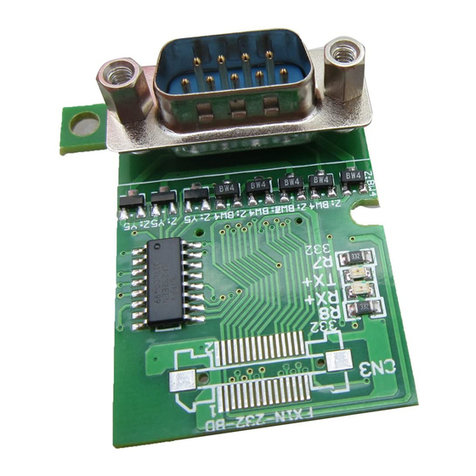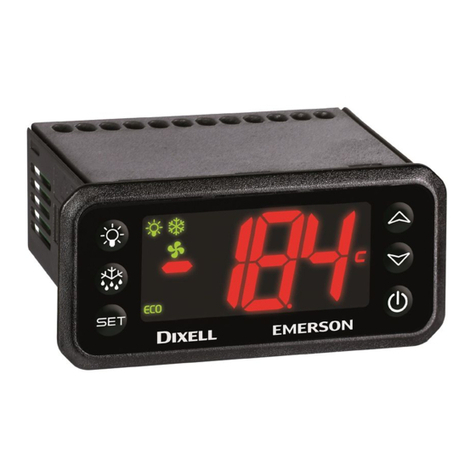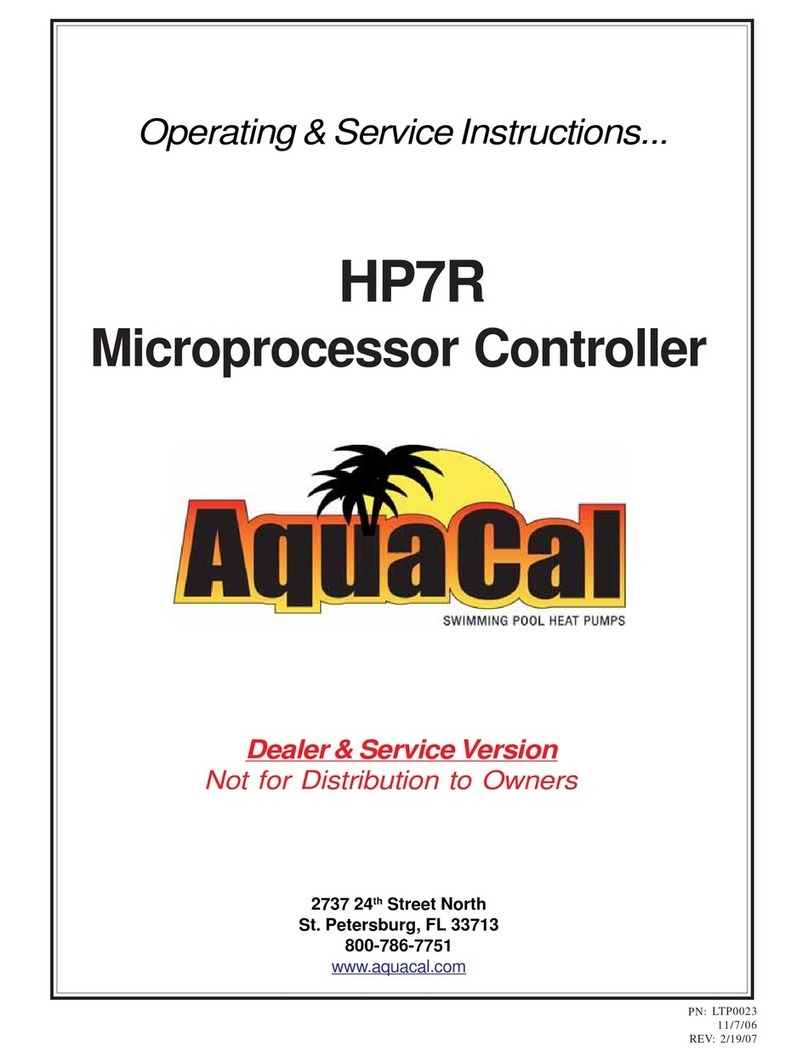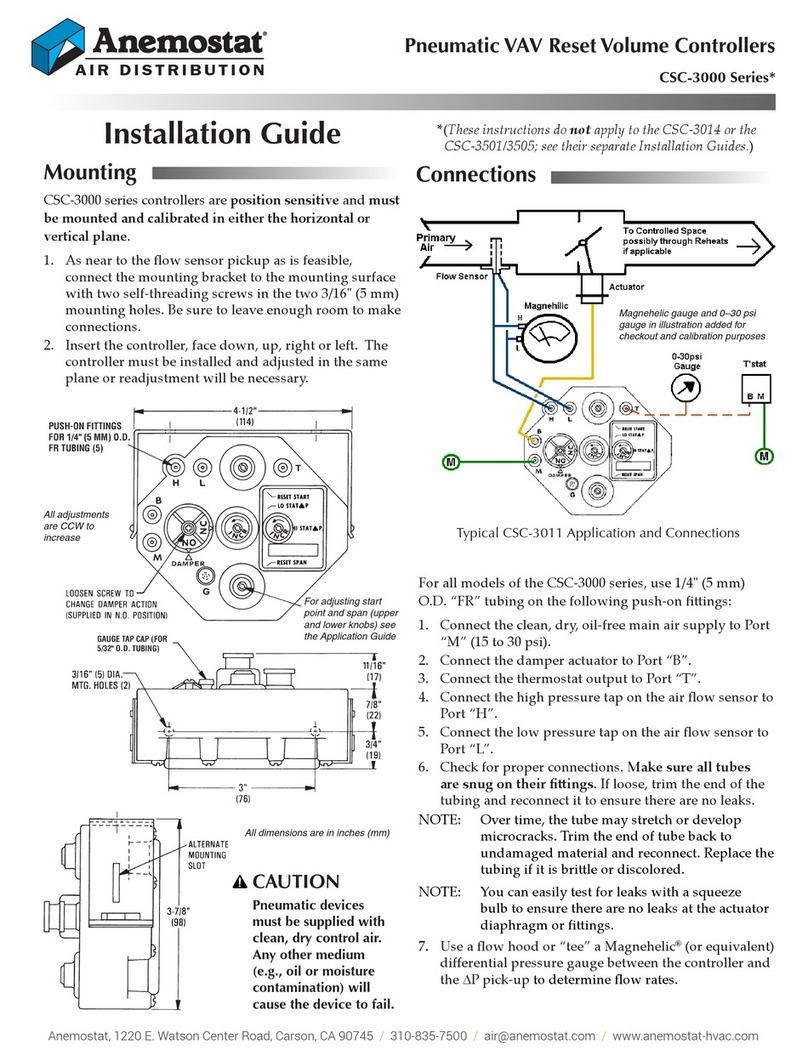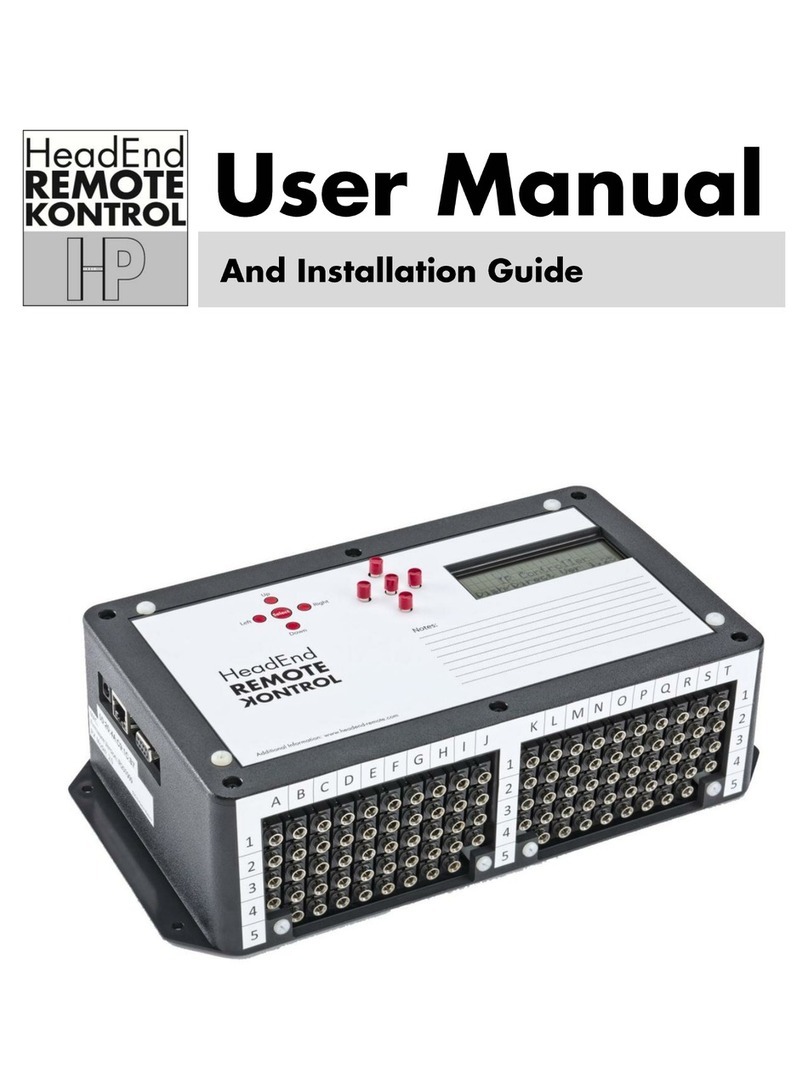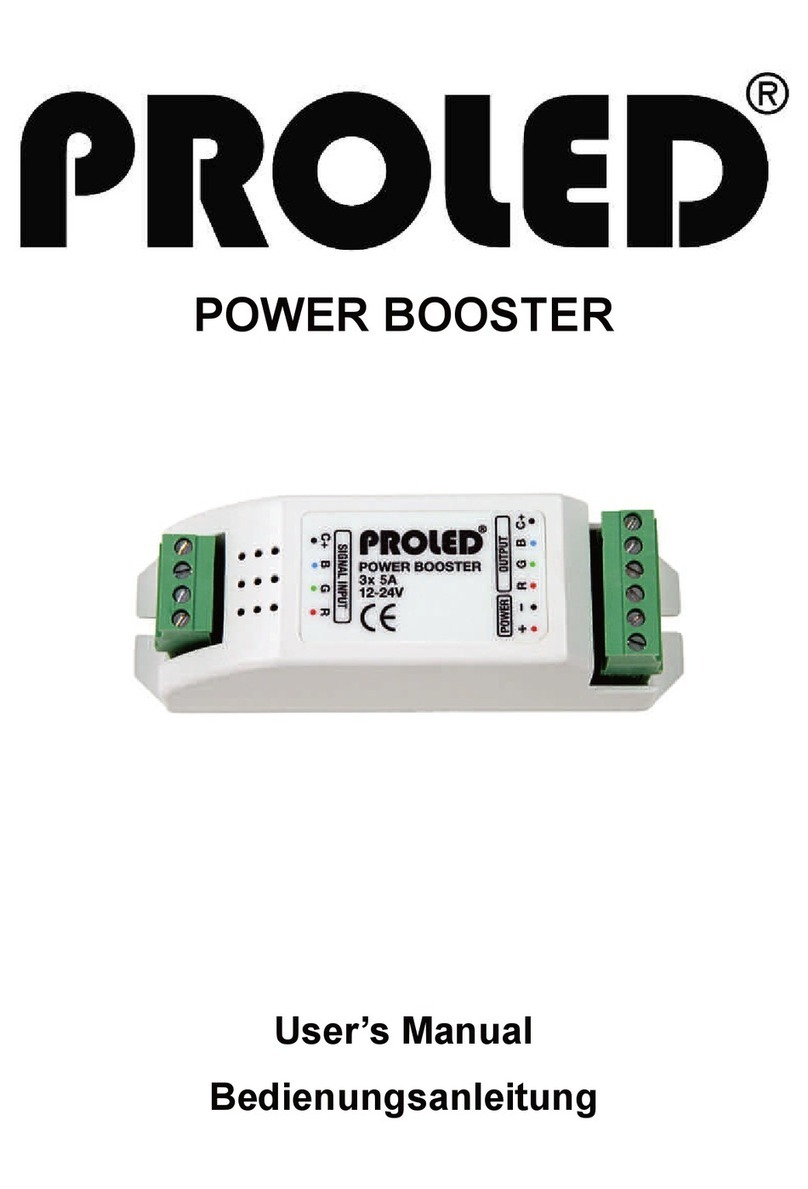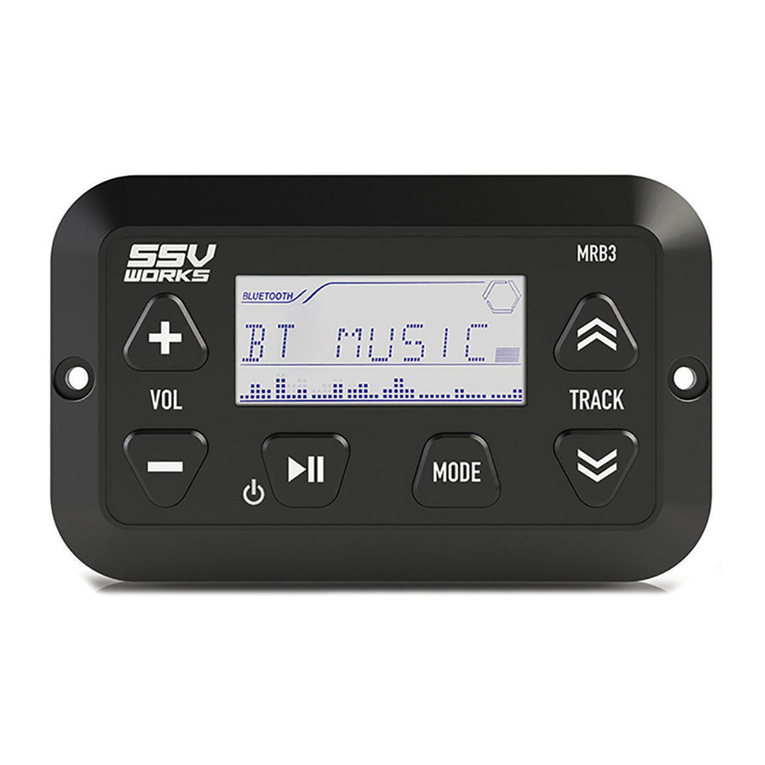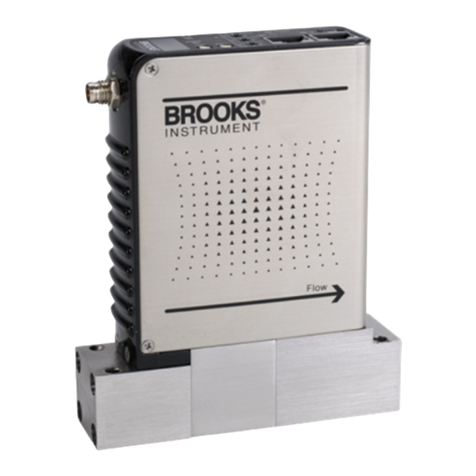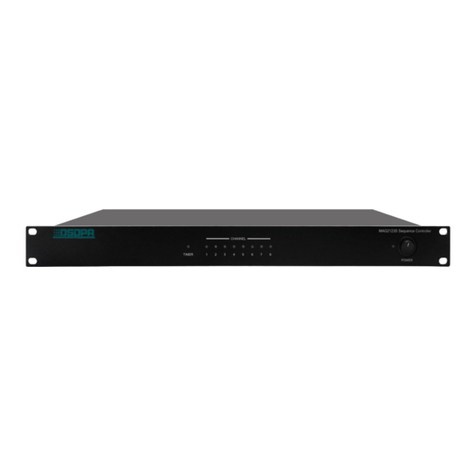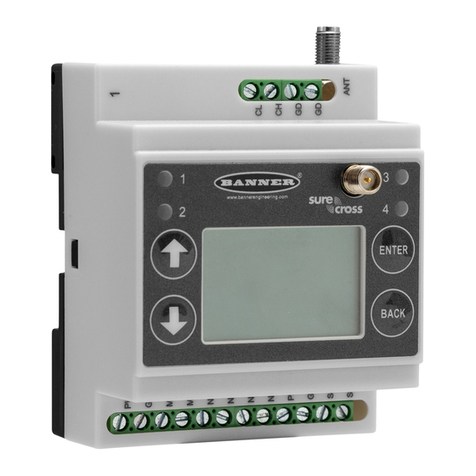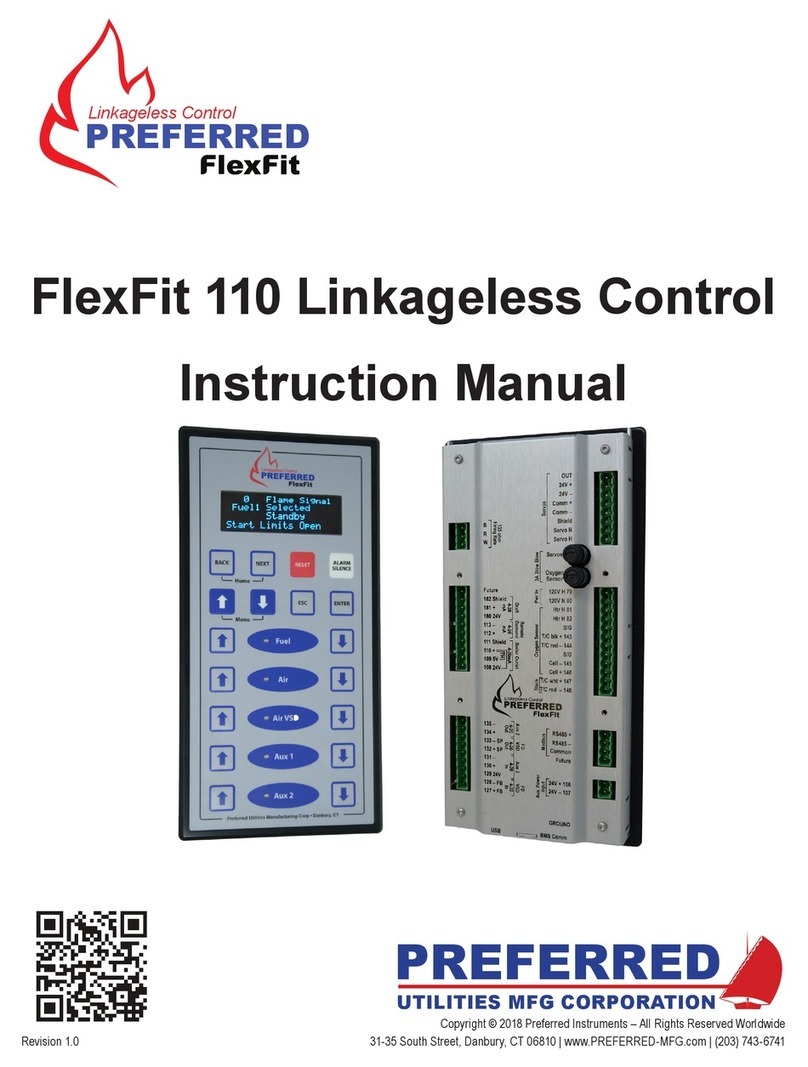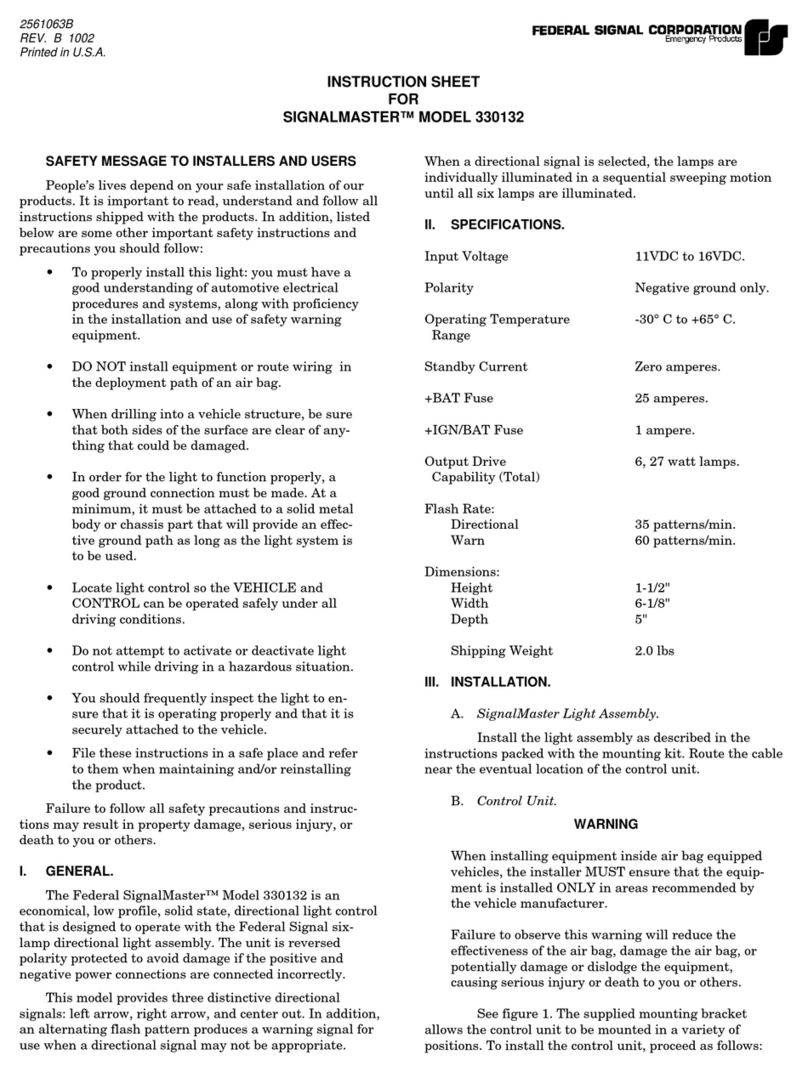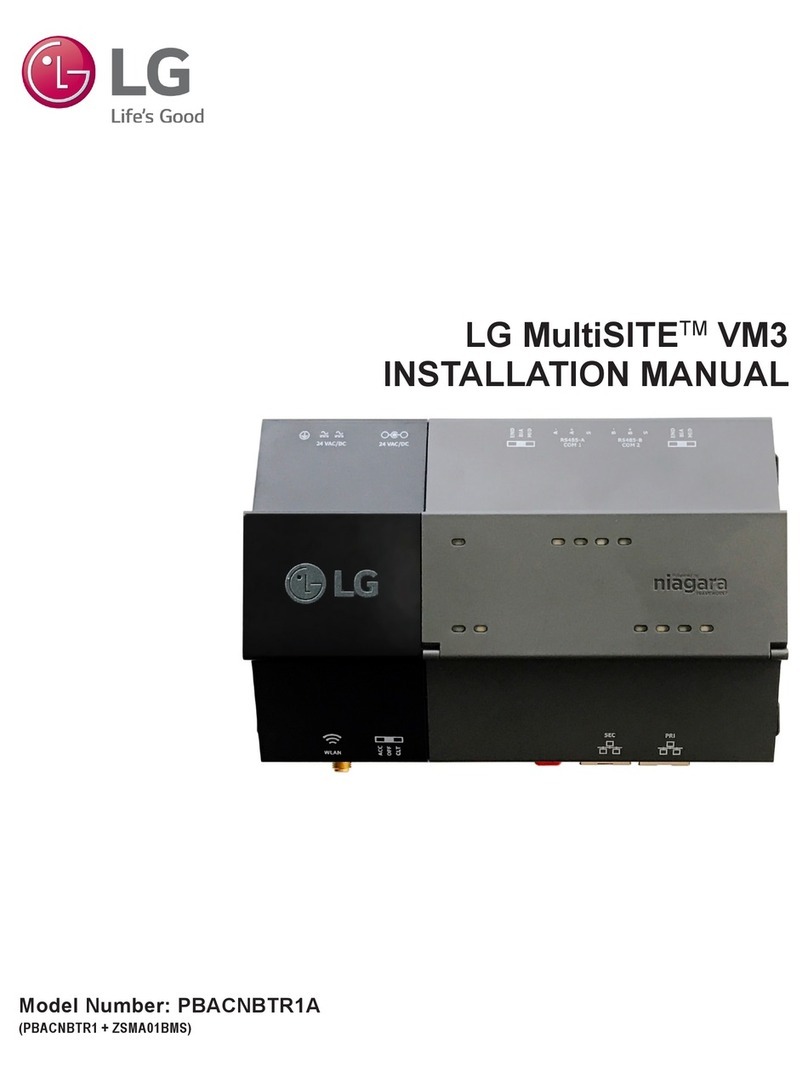E-T-A ControlPlex CPC20PN User manual

User Manual ControlPlex®
CPC20PN Controller

2
2 General information
This manual points out possible danger for
your personal safety and gives instruction
how to avoid property damage. The
following safety symbols are used to
draw the reader's attention to the safety
instructions included in this manual.
Danger!
Danger to life and limb unless the following
safety precautions are taken.
Warning
Danger to machinery, materials or the
environment unless the following safety
precautions are taken.
Note
Information is provided to allow a better
understanding.
Caution
Electrostatically sensitive devices (ESD).
Devices must exclusively be opened by
the manufacturer.
Disposal guidelines
Packaging can be recycled and should
generally be brought to re-use.
2.2 Qualified personnel
This user manual must exclusively be used
by qualified personnel, who are able –
based on their training and experience – to
realise arising problems when handling the
product and to avoid related hazards. These
persons have to ensure that the use of the
product described here meets the safety
requirements as well as the requirements
of the presently valid directives, standards
and laws.
2.3 Use
The product is part of a continuous
enhancement process. Therefore there
might be deviations between the product
in hand and this documentation. These
deviations will be remedied by a regular
review and resulting corrections in future
editions. The right to make changes
without notice is reserved. Error and
omissions excepted.
2.4 Delivery state
The product is supplied with a defined
hardware and software configuration.
Any changes in excess of the documented
options are not permitted and lead to
liability exclusion.

3
3 General description
Requirements regarding transparency
and flexibility are constantly growing in
industrial applications. Modern automation
technology meets these requirements
with cross-linked components and their
communication capabilities in a range of
business levels and sectors. Control and
computer-aided solutions are no longer
the sole focus, but monitoring of individual
components and processes becomes
more and more important. This is exactly
the target application area of the intelligent
and bus-capable power distribution
system ControlPlex®. It serves for the
protection of industrial applications as
well for monitoring and control. The
CPC20 bus controller is the centre piece
of the system. It analyses measuring
data, indicates error and transmits the
information to the superordinate control
systems by means of standard bus
systems. Its OPC* UA interface offers the
option of direct communication with a
company’s IT infrastructure.
The CPC20 has been designed as a
system in connection with module
18plus. It consists of a supply module for
supply of max. 80 A. Up to 16 connection
modules can be connected, each of them
accommodating one double-channel
electronic circuit protector. In the end
the user has max. 32 channels for his
protection system. When using a transfer
module, the number of channels can even
be doubled once more. Thus the CPC20
offers a maximum number of 64 channels.
Communication options comprise
transmission of the operating condition, of
measuring values and device information
regarding the connected components,
but also changes of the product-specific
parameters such as current ratings and
execution of actions, e.g. ON and OFF
operation.
Information can be transmitted in a cyclical
or non-cyclical mode to the superordinate
control system, the Ethernet interface
or via an available service interface to
the connected service computer. If no
connection is available to a superordinate
control unit, this will have no effect on
the behaviour of the connected circuit
protectors. The bus controller is able to
ensure their functionality even without a
connection to a superordinate control unit.
The saved parameters will be used for this
purpose.
The ControlPlex®intelligent power
distribution system offers the well-known
E-T-A quality and reliability with regard to
overcurrent protection in combination with
the innovative functionalities on the score
of automation technology.
* under preparation. Can be retrofitted via firmware update when available.

4
3.1 Design of the entire system
The CPC20 bus controller is the centre
piece of the ControlPlex®system. It allows
consistent communication between the
ESX60D electronic circuit protectors and
the superordinate control level, connected
HMIs and even into the Cloud.
The PROFINET interface to the
superordinate control unit is implemented
as two RJ45 connectors. It allows
connection of the required control unit with
the ControlPlex®system, This enables
display, analysis as well as diagnosis of the
individual measuring values. In addition, it
allows control of the individual electronic
circuit protectors. An additional Ethernet
interface enables direct access of the
integral web server of the bus controller.
Service staff can thus directly access the
system on site. Moreover, access via the
connected infrastructure of the company
is enables and thus global access. OPC
UA* and MQTT* allow transmission of all
measuring values and status information
e.g. to a superordinate cloud application,
independently of the control system.
Revised measuring values of all electronic
circuit protectors are also forwarded to
the automation system. This enables the
user to have unrestricted access to the
safety-relevant functions even in the event
of an interruption. Any occurring failures
will be detected quickly and can be
remedied without delay. The ControlPlex®
system effectively reduces system
downtimes and significantly increases
the productivity.
16 power distribution modules with up to
16 2-channel ESX60D electronic circuit
protectors can be directly connected to
the CPC20 bus controller. This number
can be doubled with the transfer module.
Thus the bus controller operates up to 64
channels. This is done in a cycle time of
520 ms.
fig. 1: System overview
* under preparation. Can be retrofitted via firmware
update when available.
MM
CPUCPU
HMIHMI
ERP MES
Central computer
Online services
Remote
maintenance

5
3.2 Dimensions
CPC20
3.3 Dimensions
18plus-EM03 supply module
fig. 2: Dimensions CPC20
fig. 3: Dimensions of 18plus-EM03 supply module
3.4 Dimensions
18plus- AM03 connection module
3.5 Dimensions
18plus-TM03 transfer module
fig. 4: Dimensions of 18plus-AM03 connection module
fig. 5: Dimensions of 18plus-TM03 transfer module
7.5
105 ± 1
43
symmetrical rail to EN 60715-35x7.5
24
69
130 ± 1
130±0.8
42.5
13.5
7.5
130±0.8
66.3
34.7
58.3
42.5
13.1
7.5
130±0.8
13.5
7.5

6
3.6 Dimensions of 18plus-AM03 connection module with
ESX60D
3.7 Status indication and terminals
130±0.8
105±1
13.1
7.5
fig. 6: Dimensions of 18plus-AM03 connection module fitted with ESX60D
fig. 7: Status indication and terminals CPC20
-XD1 supply
LED US1
LED BF
LED SF
-X3 USB service interface
-X2 extension interface
-X1 Ethernet interface
-XF2 PROFINET interface
-XF1 PROFINET interface
Type CPC20PN-T2
US1
BF
SF
USB
X3
X2
COM-2
ETH
X1
XF2
XF1
PROFINET
16/ADR
15/ELB
++0V 0V

7
3.7.1 Terminals for voltage supply
supply XD1
Voltage ratings: DC 24 V (± 10 % 18 ... 30 V)
Rated current: typically 160 mA
Terminal design: 4 x push-in terminals (+/+/0V/0V)
Max. cable cross section rigid 0.2 – 2.5 mm2
flexible with wire end ferrule (with plastic sleeve) 0.2 – 2.5 mm2
flexible with wire end ferrule (without plastic sleeve) 0.2 – 2.5 mm2
stripping length 11 mm
Using a supply voltage outside the indicated operating range can cause
malfunctions or destruction of the device.
The CPC20 has a direct and fixed connection between the housing shield of
the RJ45 connectors (XF1, XF2 and X1) and the 0V of X41.
3.7.2 Connector for the additional ELBus®
X2 Direct connection with 18plus (no wiring required)
X52COM-2: Connection for the second power distribution system 18plus
Cable length max. 3 m
typically H07V-K 1.5 mm²
15: Data line ELBus®COM
16: Addressing
Use of the terminals for applications not provided for in the operation manual
or improper connection can lead to malfunction or destruction of the device.
3.7.3
USB service and maintenance interface, terminal X3)
The USB interface serves for connection of the service computer. The available user
software ControlPlex® Views provides the option to carry out firmware updates.
X2
18plus-TM03
connection
sleeve
16. Supply voltage ELBus®+ 24 V
15. Data line ELBus®
15
16
fig. 8: ELBus®connection
130±0,8
42,513,5
7,5

8
fig. 9: Signalling RJ45 connectors
3.7.4 PROFINET interfaces with integral switch, connection
sleeve XF1, XF2
XF1 Connection to bus system PROFINET
Type: RJ45
When wiring and connecting to the bus system PROFINET the installation and wiring
regulations of the PROFIBUS User Organisation (PNO) have to be observed.
XF2 Connection to bus system PROFINET
Type: RJ45
When wiring and connecting to the bus system PROFINET the installation and wiring
regulations of the PROFIBUS User Organisation (PNO) have to be observed
LED colour description
US1 green Normal duty, SF or BF possible.
orange The breaker is in the start-up phase.
red blinking Firmware update is presently carried out.
BF orange The breaker is in the start-up phase.
red blinking Firmware update is presently carried out.
red Bus error
SF orange The breaker is in the start-up phase.
red blinking Firmware update is presently carried out.
red System error
ACT OFF No activity
blinking
yellow Activity available
LNK
OFF No link available
green
blinking PROFINET devices localisation
green Link available
XF2
LED ACT
LED LNK
LED ACT
LED LNK
XF1
3.7.5 ETHERNET interface, connection sleeve X1
X1 connection with bus controller CPC20
Type: RJ45
3.7.6 LED status indication

9
4 Mounting and installation
4.1 Mounting of the system
The preferred mounting position of the ControlPlex system is horizontal.
fig. 10: Installation drawing

10
fig. 11: System installation
4.2 System installation
Connection of CPC20 bus controller
with 18plus-TM03 transfer module for
extension of the number of circuit protec-
tors to be connected to 32 devices.
The connection between CPC20 and the
18plus-TM03 has to be realised manually.
PROFINET
DC 24 V +
18plus-AM03 with CPC20
18plus-AM03 with 18-plus-TM03
DC 24 V GND

11
5 Operating modes of the CPC20 bus controller
5.1 Operating mode: Start-up mode
The CPC20 bus controller is initialised by applying the supply
voltage. The device will carry out implemented programme
memory tests and self test routines. During this time a
communication via the interfaces is not possible.
5.2 Operating mode: System error mode
If a failure is detected during the self test routines, the bus
controller will change into operating mode System Error. This
operating mode can only be discontinued by way of re-starting
the device and it prevents the data exchange via the interfaces.
If the bus controller is in this operating mode, it is unable to
control the electronic circuit protectors and these will stay in the
stand-alone mode (overcurrent protection).
5.3 Operating mode: Configuration error
mode
If there are no valid or invalid configuration data available in
the bus controller, it will change into this operating mode. This
operating mode only allows non-cyclical data exchange. Cyclical
data exchange is prevented. Leave this operating mode upon
receipt of the correct slot parameters and configuration data.
5.4 Operating mode: stand-alone mode
In normal duty there is a connection between the bus controller
and the superordinate control unit. Thus the control of the
electronic circuit protectors and the change of their parameters
is executed by the superordinate control unit. Should the
communication between both participants fail, this has no
influence on the protective function of the circuit protectors. In
this case the CPC20 bus controller will automatically adopt the
control and parameterisation of the electronic circuit protectors,
because all required data sets are saved within the CPC20. By
means of the web server, the electronic circuit protectors, their
status and parameters can be accessed via the Ethernet interface
interface. It is thus possible to change e.g. parameter data of
the various electronic circuit protectors. If the failure on the
communication level is remedied, this operating mode will be left
and the superordinate control unit will take over control again as
master. If during this time a parameter was changed while there
was no communication, this will be signalled to the superordinate
control unit. In this case the user can correspondingly define the
control behaviour and it can be programmed in the programmable
control unit. This allows the user to select a reaction meeting his
requirements.
5.5 Operating mode: Slave mode
In this operating mode the CPC20 is involved in a PROFINET
system. Communication to the CPC20 bus controller works
faultlessly and the controller can be addressed and controlled
by the superordinate control unit.
The behaviour of the bus controller with simultaneous use of
a field bus interface and of the web server or the USB service
and maintenance interface can be determined by means of the
configuration of the device in the superordinate control unit. It can
be pre-selected there that Ethernet and/or the USB service and
maintenance interface are granted either only reader access or
reader and editor access. In the event of editor access, changes
of the parameterisation of the electronic circuit protectors can be
carried out in parallel to the field bus system. These parameter
changes will then be advised to the superordinate control system
and can be adopted by it or also overwritten. The user can select
the behaviour accordingly.

12
5.6 Operating mode: Firmware Update Mode
The devices are supplied with a software programmed according
to their functionality. If the functions of the devices are extended,
this will be carried out in the firmware. It is therefore necessary to
carry out a firmware update if the new functionality shall be used.
6 Basic functionalities of the entire system
6.1 Internal cycle times 6.2 Hot swap of circuit protectors
The cycle time of the system depends on the number of data
to be transmitted between the CPC20 bus controller and the
projected slots for the ESX60D electronic circuit protectors.
It is possible to choose the data quantity for the communication
ot the superordinate control unit. This can be achieved by using
the different data models. It is therefore possible to transmit
either the status, the measuring values for the load current and
the output voltage of the electronic circuit protector or to only
send the circuit protector status to the superordinate control unit.
The choice between the various data models is made available
to the user in the GSDML file of the control system. These are
configuration data which are transmitted to the store programme
control by means of the hardware configuration of the CPC20.
The cycle time per bus with 16 18plus-AM03 modules is approx.
520 ms for the cyclical data. A window of 70 ms is kept free for
non-cyclical data. In total, this is a max. cycle time of 590 ms.
The ESX60D electronic circuit protectors can be plugged
into the 18plus-AM03 power distribution module at any time.
After plugging in a circuit protector, it will automatically be
parameterised if parameters are available for the slot in question.
Transmission of the parameters will be without interruption of the
cyclical data exchange between the CPC20 and the ESX60D
electronic circuit protector.

13
6.3 Communication via the
USB service interface
The maintenance and service interface allows direct access to
the CPC20 bus controller. Firmware updates for the CPC20 are
possible via this interface.
6.4 About the additional
Ethernet interface
The additional Ethernet interface extends the functional scope
of the bus controller. The following functionalities are provided
via this interface.
6.4 1 Web Server
The web server offers the entire scope of measuring data, status
information, parameterisation options an d control function of
the CPC20 bus controller. The parameterisation of the interface
is described separately.
6.4.1.1 Default IP address -X91
The default IP address of the CPC20 is: 192.168.1.1
The web server can be reached via this IP address.
6.4.1.2 User name and password
In order to be able to carry out configurations, the user has
to have the required access authorisation. It is defined in user
administration.
The default settings are:
User: admin
Password: admin
We urgently recommend to individually adjust these
settings upon startup of the device.

14
7 Communication via PROFINET
7.1 ControlPlex®device model
Up to two power distribution systems can be connected to the
CPC20 controller. They consist of the 18plus-EM-03 supply, the
18plus-AM03 connection modules and for the external system,
communication is run via the 18plus-TM03 transfer module. These
blocks are purely passive. Up to 16 18plus-AM03 connection
modules can be configured in slots 2 and 3. The 18plus-AM03
connection modules, which can be directly mounted side-by-side
with the CPC20, are configured at slot 2. The 18plus-AM03
connection modules connected to the 18plus-TM03 transfer
module are configured at slot 3.
The power distribution system ControlPlex®uses the following
PROFINET model:
fig. 13: Device model
Bus interface SubSlot 1
I/O Data
CPC20PN
2 bytes input
SubSlot 1
Total current
2 bytes input
SubSlot 2
status/control
Min. 1/1 byte*
max. 32/32 bytes*
SubSlot 3
Measuring values
min. 16 bytes*
Inp.* max. 128
SubSlot 1
Total current
2 bytes input
SubSlot 2
status/control
Min. 1/1 byte*
max. 32/32 bytes*
SubSlot 3
Measuring values
min. 16 bytes*
Inp.* max. 128
Slot 0 Slot 1 Slot 2 Slot 3
DAP CPC20PN CPC20/ 18plus-
18plus-AM03 -TM03/-AM03

15
PROFINET CPC20PN
Device The CPC20PN controls itself. It has the following features:
– The PROFINET interface (DAP) via which the master communicates with the CPC20PN
– CPC20PN holds the status of the controller.
– CPC20 / 18plus-AM03 connection module: it is possible to configure 1 to 16 modules.
18plus-TM03 transfer module / 18plus-AM03 connection module: it is possible to configure 1 to 16 modules.
Slots Slot 0:
Modules are shown here which are required for the PROFINET communication.
They do not have to be configured further.
Slot 1:
Here are the I/O data of the CPC20 controller. A sub-module with firm I/O assignment has already been
»plugged« in this slot. This sub-module contains 2 input and output bytes which are described in more detail
in the chapter Module I/O Data CPC20 controller.
This slot is firmly installed and cannot be removed.
Slot 2 -3:
The slots 2-3 correspond to the terminals of the 18plus-AM03 and hold three sub-module slots which
can be occupied dynamically by the PLC configuration.
The module type is not directly checked, i.e. if 4 x- AM03 modules are »plugged-in« during the project
planning stage, but eventually 8 x 18plus modules are connected, this configuration will boot correctly.
However, in this case only the first 4 circuit protectors will be included in the cyclical data exchange,
the remaining 4 will not be contained in the process data image.
The reverse case is equally allowed (8 x 18plus- AM03 module planned, but only 4 x 18plus-AM03
connected. In this case the lacking circuit protectors will be signalled as »not available« in the cyclical
process data image).
SubSlots Each module has three sub-slots:
Slot 1: total current of all connected channels
Slot 2: status and control bytes of the circuit protectors
Slot 3: measuring values of the circuit protectors
A corresponding sub-module (from the GSDML file) can be »plugged« into each slot or the slot can remain
empty. If the slot remains empty, no cyclical process data will be exchanged for the slot.
The quantity of the cyclically to be exchanged process data can be determined via this mechanism (on the
level of the number of 18plus modules) depending on the application.
fig. 14: Communication properties

16
7.2 GSDML file
The IODD file is in the download area of the E-T-A website and can be downloaded there.
7.3 I&M data (identification & maintenance)
The following I&M data are made available by the CPC20 controller:
I&M data length data set meaning
MANUFACTURER_ID 2 bytes I&M0 manufacturer identification 0696h
ORDER_ID 20 bytes I&M0 part number
SERIAL_NUMBER 16 bytes I&M0 serial number
HARDWARE_REVISION 2 bytes I&M0 revision index
SOFTWARE_REVISION 4 bytes I&M0 firmware version
REVISION_COUNTER 2 bytes I&M0 revision counter
PROFILE_ID 2 bytes I&M0 profile ID 0000h
PROFILE_SPECIFIC_TYPE 2 bytes I&M0 profile-specific coding 0004h
IM_VERSION 2 bytes I&M0 version of the I&M data 0101h
IM_SUPPORTED 2 bytes I&M0 supported data sets 002Eh
TAG_FUNCTION 32 bytes I&M1 unambiguous marking
throughout the plant
TAG_LOCATION 22 bytes I&M1 installation area
INSTALLATION_DATE 16 bytes I&M2 installation date and time
DESCRIPTOR 54 bytes I&M3 comments
fig. 15: I&M data

17
8 Cyclical I/O data
Depending on the planned module type and the selected
sub-modules, a varying number of data bytes are exchanged in
the cyclical data traffic.
The system allows individual determination per slot if I/O data
(status/control), measuring values and/or total current shall be
transmitted. The GSDML file made available for the projecting
tool allows the related configuration the system recognises all
permitted configurations and processes the cyclical data defined
in the projection.
Only the module I/O data CPC20 controller is firmly pre-set and
cannot be removed because the input bytes hold vital failure and
diagnostic information as described in the following.
byte type range description
status controller 0 HighByte
1 LowByte
Word 0xFFFF Bit 0 = no configuration data available
Bit1 = invalid configuration data
bit 2 = reserve
bit 3 = reserve
Bit4 = command buffer overflow
bit 5 = reserve
bit 6 = reserve
Bit7 = no communication with at least one PWR board
Bit8 = reserve
Bit9 = CPC temporary error
Bit10 = CPC hardware error
Bit11 = reserve
Bit12 = reserve
Bit13 = reserve
Bit14 = reserve
Bit15 = reserve
fig. 16: Diagnostic data
8.2 Submodule Status/Control
Depending on the number of 18plus-AM03 connection modules
used (one 18plus-AM03 module corresponds to two channels),
per channel one byte input data with the status of the circuit
protector and one byte output data for control of the circuit
protector are exchanged here.
Example:
8 18plus-AM03 connection modules equal 16 channels. This
results in 16 bytes for status information and 16 bytes for control
for the data exchange.
Addressing is effected according to the
18plus-AM03 sequence
18plus-AM03 1, channel 1.1 byte address [0]
18plus-AM03 1, channel 1.2 byte address [1]
18plus-AM03 2, channel 2.1 byte address [2]
…….
8.1 Module I/O data CPC20 controller
The 2 bytes input data contain the following global error and
diagnostic messages. This module does not contain any output
data.

18
byte type range description
status byte Word 0…255 bit 0 = load output
bit 1 = short circuit
bit 2 = overload
bit 3 = low voltage
bit 4 = excess temperature
bit 5 = excess temperature
bit 6 = limit value current
bit 7 = event
»True« means the status is active.
byte type range description
Control 0 byte 0…255 bit 0 = load output ON/OFF
bit 1 = reset load output (only responds to rising edge)
bit 2 = reserve
bit 3 = reserve
bit 4 = reserve
bit 5 = reserve
bit 6 = reserve
bit 7 = reserve
»True« means the status is active.
8.2.1 Status circuit protector
Design of the input byte per channel is as follows (status circuit protector):
fig. 17: Status channel
8.2.2 Control circuit protector
Design of the output byte per circuit protector slot is as follows (control circuit protector):
fig. 18: Control channel
8.3 Submodule measuring values
Depending on the number of 18plus-AM03 connection modules
used (one 18plus-AM03 connection module equals two channels)
four bytes input data with measuring values of load current and
load voltage of the corresponding circuit protector are made
available per channel. The sub-module does not have output
data.
The sequence of the measuring values is load current (2 bytes),
followed by load voltage (2 bytes)
Example:
8 18plus-AM03 connection modules equal 16 channels. This results in 16*4, i.e. 64 bytes for the data exchange.
Addressing is effected according to the 18plus-AM03 sequence.
18plus-AM03 1, channel 1.1 byte address [0..1] load current, byte address [2..3] load voltage
18plus-AM03 1, channel 1.2 byte address [4..5] load current, byte address [6..7] load voltage
18plus-AM03 1, channel 2.1 byte address [8..9] load current, byte address [10..11] load voltage
…….

19
byte type range description
load current 0 HighByte
1 LowByte
Int Contains the lowest measured current of the channel since the last reset.
A standardised 16-bit-value with a resolution of 10 mA is made available.
Example for calculation of the measuring value:
Value (150): 100 = 1.50 Ampere
8.3.1 Load current circuit protector
Design of the input bytes per channel is as follows (measuring value load current):
fig. 19: Load current channel
byte type range description
Load voltage 0 HighByte
1 LowByte
Int A standardised 16-bit-value with a resolution of 10 mV is made available.
Example for calculation of the measuring value:
Value (2512): 100 = 25.12 Volt
byte type range description
Load voltage 0 HighByte
1 LowByte
Int A standardised 16-bit-value with a resolution of 10 mA is made available.
Example for calculation of the measuring value:
Value (1320): 100 = 13.20 Ampere
8.3.2 Load voltage circuit protector
Design of the input bytes per channel is as follows (measuring value load current):
8.4 Submodule total current
The sub-module total current supplies a standardised 16 Bit
value with the calculated total current of all 18plus-AM03
modules in slot (2 byte input data). The sub-module does not
have output data.
The measuring value is indicated as follows:
fig. 20: Load voltage channel
fig. 21: Total current

20
physics index digit description
Channel no. on ELBus Decimal numbers 103 and
102
Number of channel to be queried.
Valid value range: 00…32
parameter index Decimal numbers 101 and
100
The parameter index defines the data range and the data type of
the data to be read or written.
Valid value range: 01…10
Parameters
Index (W) slot slot
number
number of
data bytes
reading (R)
writing (W) description
02 1 00 19 R device information of
CPC20 controller (see chapter 9.1.1).
03 1 00 2 R/W Configuration data of
CPC20 controller (see chapter 9.1.2).
05 1 00 1 W Action commands for all channels and the
CPC20 (see chapter 9.1.3)
9 Non-cyclical data
Non-cyclical PROFINET services allow exchange of more data
with the CPC20 controller and the circuit protectors. Access
also allows direct addressing of a circuit protector. PROFINET
index and slot number are used for this. For reading and editing
controller data, slot 1 is used. Slot 2 is used for reading and
editing the channels on the CPC. Slot 3 is used for reading and
editing the channels on the extension board- (Overview of slots
see 7.1).
The index is set up as follows:
02 01
parameter index
channel no. (1-32)
The index is assigned to the following non-cyclical data areas:
Controller
fig. 23: Set-up parameter index CPC
fig. 22: Index structure
This manual suits for next models
1
Table of contents
Other E-T-A Controllers manuals

E-T-A
E-T-A EtherNetIP ControlPlex CPC12EN User manual
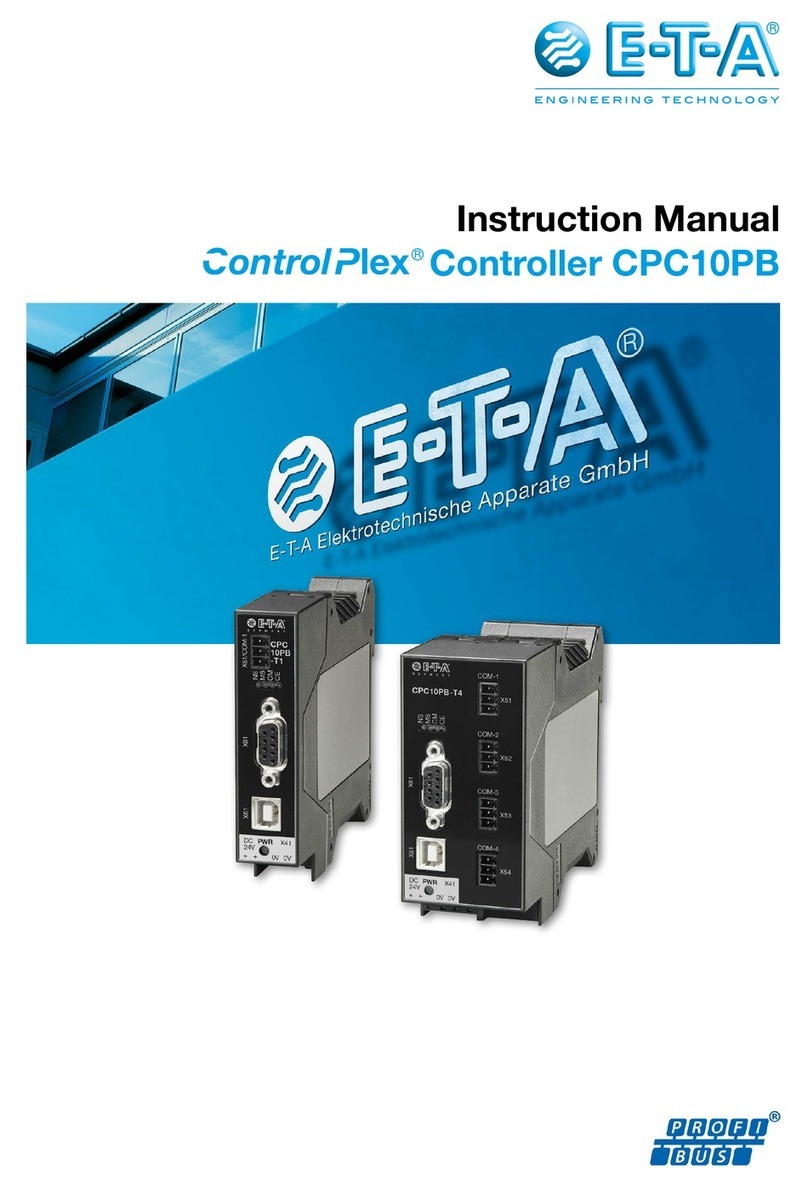
E-T-A
E-T-A ControlPlex CPC10PB User manual
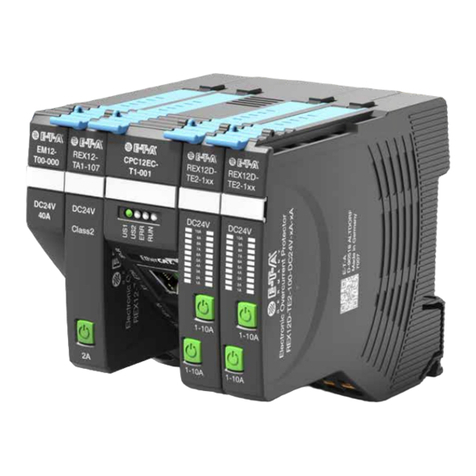
E-T-A
E-T-A ControlPlex CPC12 User manual

E-T-A
E-T-A E-1071-623 User manual
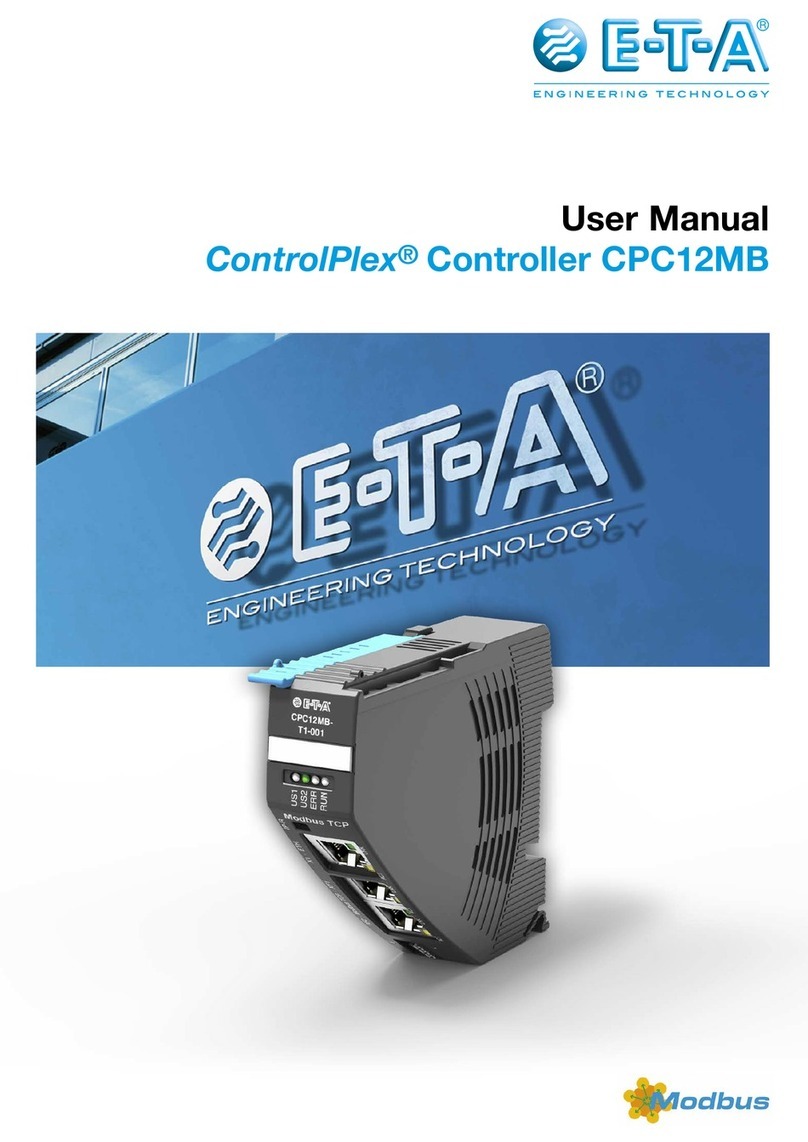
E-T-A
E-T-A ControlPlex CPC12 T Series User manual
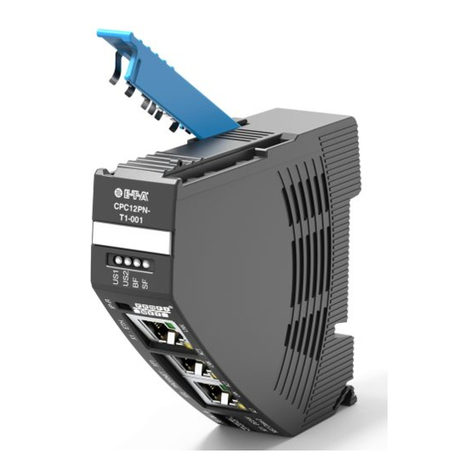
E-T-A
E-T-A ControlPlex CPC12 T Series User manual
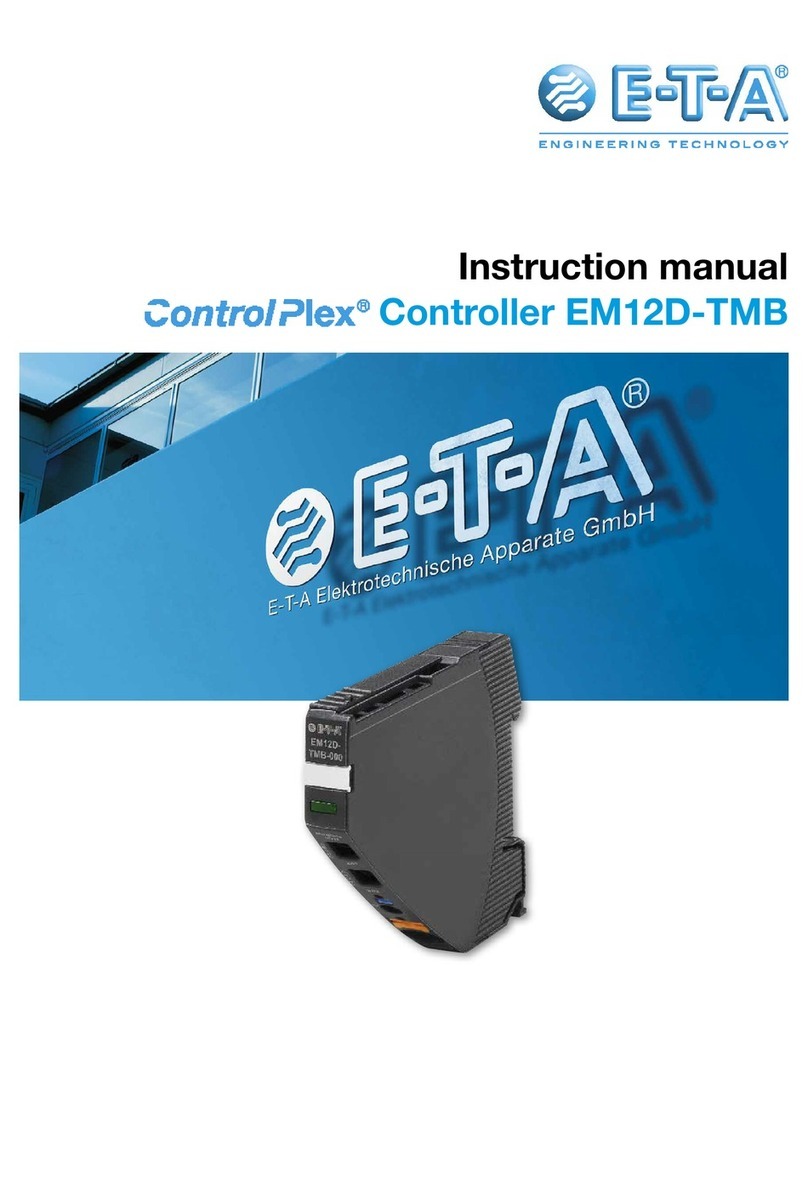
E-T-A
E-T-A EM12D-TMB Series User manual
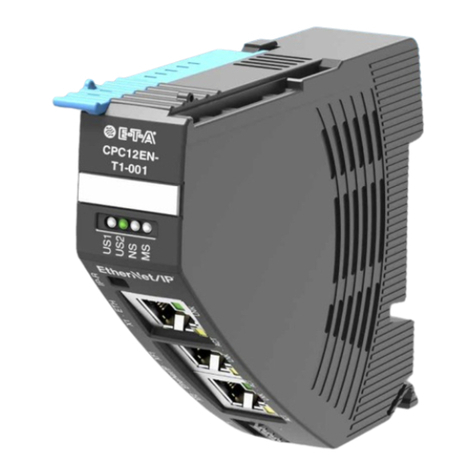
E-T-A
E-T-A EtherNetIP ControlPlex CPC12EN User manual
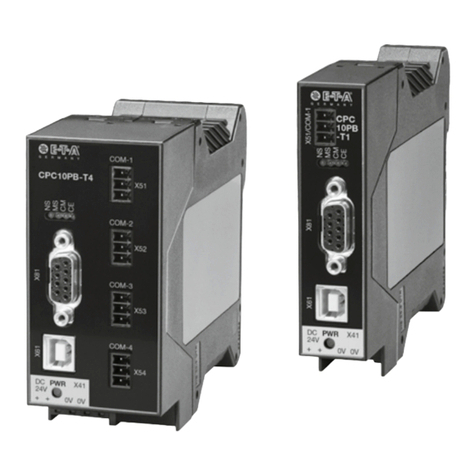
E-T-A
E-T-A Control Plex CPC10PB-T1 User manual

E-T-A
E-T-A ControlPlex CPC12 User manual
